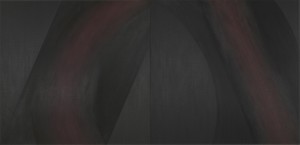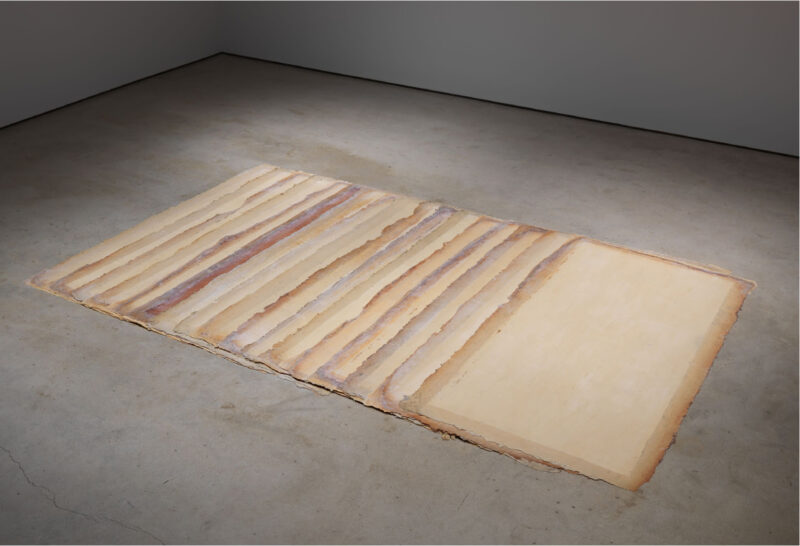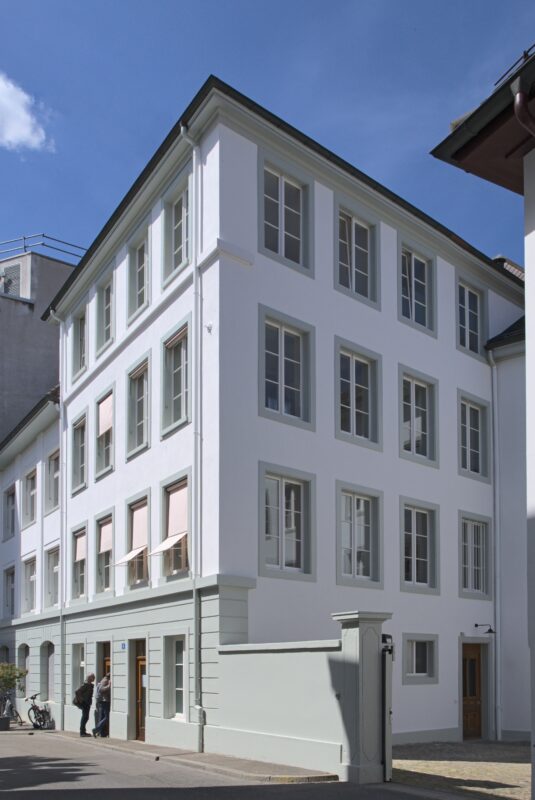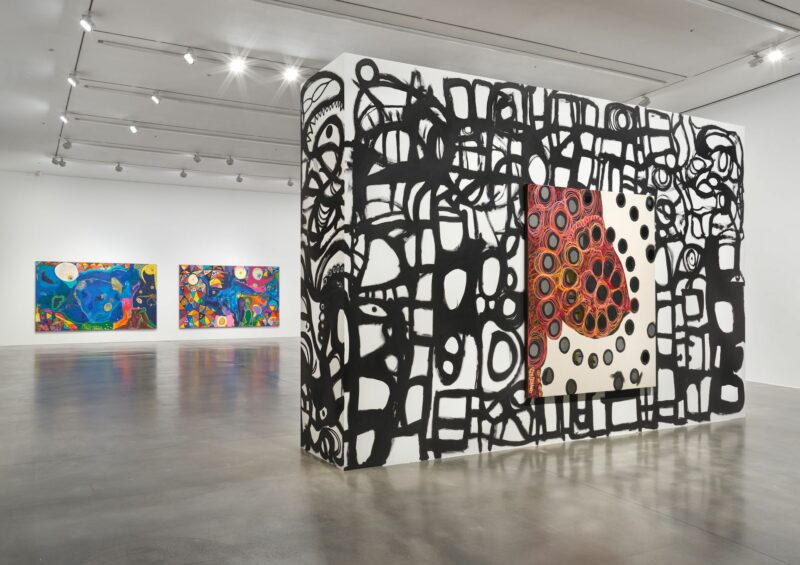
Opening: 31 October 2008, 6 – 8 pm
‘To me, matter must stand on its own, not be an image, not disappear when the lights go out. Lee could and did make pigment matter…. Her paintings were and are right.’
Carl Andre, ‘In the Matter of Lee Lozano’, from ‘Abstract Painting 1960-69’, 1983
Titled after verbs, Lee Lozano’s near abstract paintings from the mid to late 1960s come with a back story of base appetite and libidinal ferocity. Four large paintings, Clamp, Swap, Cram and Pitch, exhibited with numerous trenchant preparatory drawings, are on display at Hauser & Wirth Zürich. These works are insistently physical: dark, quasi-scientific distillations of force; taut-surfaced vectors in which pigment and pencil are felt as solid matter and concentrated energy.
Although Lozano’s career lasted only a decade — from 1961 when she moved to New York until 1971 when she methodically staged her own exit from the art world — it was both successful and influential. The recipient of a solo exhibition at the Whitney, and shown at the legendary Green Gallery, she was, more recently, described by Lucy Lippard as ‘the major female figure in New York in the ’60s’ in terms of conceptual art. Lozano’s peers included Carl Andre, DAN GRAHAM, Joseph Kosuth, Sol Lewitt, Robert Morris and Richard Serra, who recognized in her mission — to merge art and life, images and ideas — an intensity and physicality that ran contrary to the rarefied climate of much Conceptual Art of the time. Her imperative was to ‘seek the extremes, that’s where all the action is,’ wanting, as the curator and writer Bruce Hainley has since put it to ‘participate only in a total revolution simultaneously personal and public.’
Since her death in 1999 Lozano’s career has been subject to an intensive re-evaluation. She left behind a body of work striking formal breadth and complexity, embracing figurative painting in creamy impasto, obscenely comic drawings, minimal abstraction and Dialogue and Language pieces. Despite their formal diversity, her works all share a radical idealism that successively manifested itself as luscious sensuality, excoriating humour and hard-core politics, progressing from an art that was hot and chaotic to a dematerialised conceptualism.
The four large pieces at Hauser & Wirth developed out of a series entitled Tool Paintings, which Lozano began in 1964, depicting screwdrivers, bolts, pumps, clamps and hammers — phalluses rendered as machines, clinical and close-up. In the verb paintings the hard edges of the tools have morphed into geometric forms, their punning, overtly sexual connotations concentrated into a profound investigation into matter. Lozano used three-inch housepainters brushes and oxide paints to create a finely ridged, slightly reflective surface whose brushmarks convey the shape and directional thrust of the form and suggest a full-bodied physicality: ‘It’s not just surface roundness that turns me on,’ she wrote in 1968, ‘it’s the feeling of density, mass and weight.’
There is a latent sexuality and frisson to the almost symmetrical pairing of side-by-side cones in Clamp (1965), the straight, sharp shape of the forms expedient for their uninterrupted touch — a coupling whose corporeality is compounded by the cleaving (or clamping) together of two separate canvases along the line in which they meet. Yet even when executed with graphite on paper as in the small drawings Lozano drafted to push her ideas and prepare for her canvases, the sense of three-dimensionality and coercive charge of the abstract forms feels palpable.
In 1972 Lozano left New York eventually settling in Dallas, Texas where she stayed until her death in 1999. Major exhibitions include ‘Lee Lozano MATRIX: 135’, Wadsworth Atheneum, Hartford CT (1998), ‘Lee Lozano, Drawn from Life: 1961 – 1971’, PS 1/MoMA, New York (2004), ‘Win First Don’t Last Win Last Don’t Care’, Kunsthalle Basel and the Van Abbemuseum, Eindhoven (2006) and ‘“SEEK THE EXTREMES…” Lee Lozano’, Kunsthalle Wien, Vienna (2006).
A text by Todd Alden, entitled ‘Wolves in sheep’s clothing: reconsidering the changing shape and matter of Lee Lozano’s art and life’, has been written on the occasion of this exhibition.









